Kos: The Island of Hippocrates
By Marc Dubin
|
|
With long sandy beaches, a
balmy climate and monuments from various
historical eras, Kos was among the first Aegean
islands to attract visitors –during the 1930s,
under Italian rule. Despite its touristic role,
Kos is in fact one of the most fertile Greek
islands, with rich volcanic soil and an
adequate water supply from its single mountain
range. Local melons have long been famous –
old-timers as far away as the Cyclades remember
the melon-peddlers from Kos – and they’re still
sold at the roadside. Agriculture continues to
co-exist with tourism, baled hay and grazing
cattle (there are said to be almost as many
cows as people – 18,000 – on Kos) found just
behind beachfront hotel complexes. As a
strategic border island with Turkey, a military
presence is inevitable if usually not intrusive
– though it’s quite possible to catch a glimpse
of exercising tanks, cattle and hotel wings all
at once.
|
|
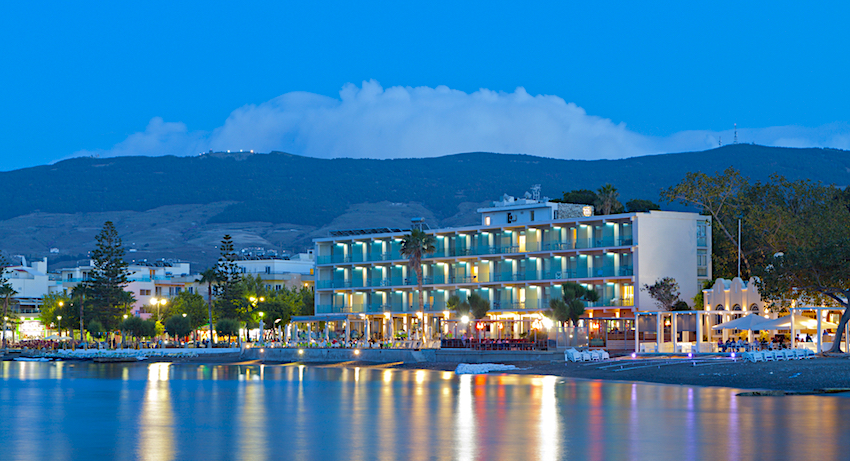
|
|
Industrial-strength
tourism began during the late 1970s, with the
first mega-hotels set back from the turquoise
sea. Within a decade Kos was a firm favourite
with growing numbers of northern Europeans
(especially Dutch and British), served by an
ever-increasing number of bars, mediocre
tavernas and trinket shops, though the island
was large enough to absorb the traffic fairly
gracefully. The hotels were pretty much
monopolised by large tour companies, such that
independent travellers found it almost
impossible to get a room in summer for love or
money.
Everything seemed to be
going swimmingly for the Koans (Kooi in Greek,
or more disparagingly in their Kalymnian
neighbours’ view, Kotes – which also means
chickens) until, a few years after the
millennium, a perfect storm devastated tourism
here. The islanders committed themselves
heavily to the all-inclusive model; independent
tavernas, mostly the mediocre ones but also
some good establishments, withered away and
died. Then several major tour companies mounted
an unofficial boycott of the island – either by
dropping hotels outright or telling travellers
who requested Kos that it was “full” on the
desired dates, and sending customers elsewhere.
Needless to say the hotels in question were not
booked out, but increasingly empty, and locals
who relied upon tourism for a living were
desperate for answers and a solution. And
finally – on top of all this – came the 2008
crash.
|
|
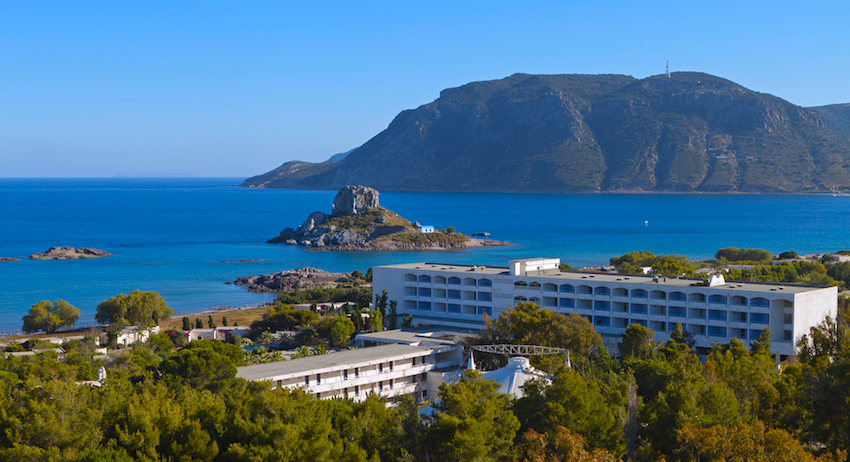
|
|
Kos was not the first
island targeted in this way by large tour
companies for a variety of reasons. Tour
companies may tire of negotiating prices with
the hotels every year, so a boycott shows hotel
owners who has the whip-hand and how dependent
they are on overseas companies, and after a
year of desperately scrounging for independent
overseas and/or Greek bookings they are usually
ready to agree to more favorable terms for the
tour companies. A year “off” can also cause
mass bankruptcies and overseas companies then
buy coveted hotels from the banks for a song.
Or perhaps a tour operator decides to maximize
profits by steering customers towards places –
Tunisia, Turkey, Thailand – where they pay less
for hotels. People who are just looking for sea
and sun will be happy anywhere that has a beach
and a fast-food joint nearby, but this is
rather shabby treatment for clients who had
their heart set on going to Greece.
All this was bad news for
the people of Kos, who built comfortable hotels
with the expectation that they would stay full
forever, but are now confronted by excess
capacity. The stop-gap measure, especially at
all-inclusive outfits, has been to accept just
about any clientele at depressed prices – in
particular Russians, who are considered rough
trade and not popular locally. But it’s good
news for the traveler who wants to enjoy a
scenic Greek island during high season, as it’s
currently a buyer’s market for some quality
hotels (on B&B or half-board basis). Maybe
this is a second chance for Kos. Because of
Kos’ association with Hippocrates and the birth
of modern medicine (read on), the island is a
popular venue for medical conventions, often
off-season, and all multi-star hotels have
ample conference facilities.
|
History of Kos
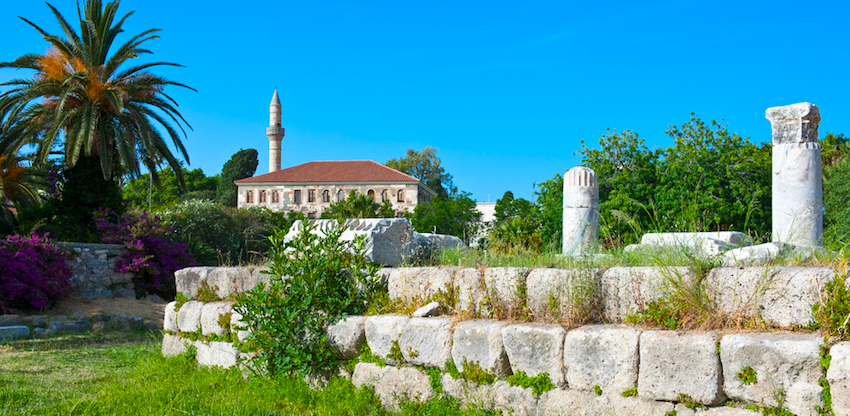
|
|
Long, narrow Kos lies just
off the Asia Minor coast, tied with Karpathos
as the second largest in the Dodecanese group.
The Minoans, attracted by the excellent harbour
at the northeast tip, settled there during the
15th century BC. The “other” ancient town,
Astypalaia in the southwest, was the birthplace
(ca. 460 BC) of Hippocrates (Ippokratis in
Greek), the father of systematic medicine (and
purported author of the Hippocratic oath still
taken by doctors today). Shortly after his
death in about 370 BC the islanders built the
Asklepion shrine, named for the god Asklepios,
which also served as a therapeutic centre known
throughout the Greek world, run in accordance
with Hippocratic methods. In 366 BC the
“capital” was moved from Astypalaia to the
Minoan port, which despite repeated earthquakes
flourished owing to its proximity to ancient
Halikarnassos (now Bodrum) on the Anatolian
coast just opposite. In 333 BC Kos was taken
briefly by Alexander the Great, and then became
semi-autonomous under the protection of the
Egyptian Ptolemies, including Ptolemy II who
was born here. By the late first century BC Kos
was effectively (and prosperously) under Roman
rule, and from this time – especially after the
severe earthquake of 27 BC – date most of the
ancient ruins on view. Christianity came early,
in the person of St Paul, and there are three
early Byzantine basilicas to be seen. In 1314
the crusading Knights of Saint John, based on
Rhodes, began work on the large fortress which
still guards the entrance of Kos harbor, using
extensive masonry (especially from the
Asklepion) dislodged by successive earthquakes.
In 1523 the knights surrendered to the Ottoman
Turks, who had taken Rhodes the previous year,
and who settled in for nearly four more
centuries until Italy seized the Dodecanese in
1912 as part of her larger war with the
Ottomans focused on Libya. In 1933, another
earthquake levelled most of the town and gave
the Italians a pretext for some extensive
archeology and urban renewal. Kos finally
become part of Greece in 1948, which ironically
accelerated emigration (mostly to Australia or
Canada), and the depopulation of the half-dozen
hill villages in favor of the coast.
|
The City of Kos
|
|
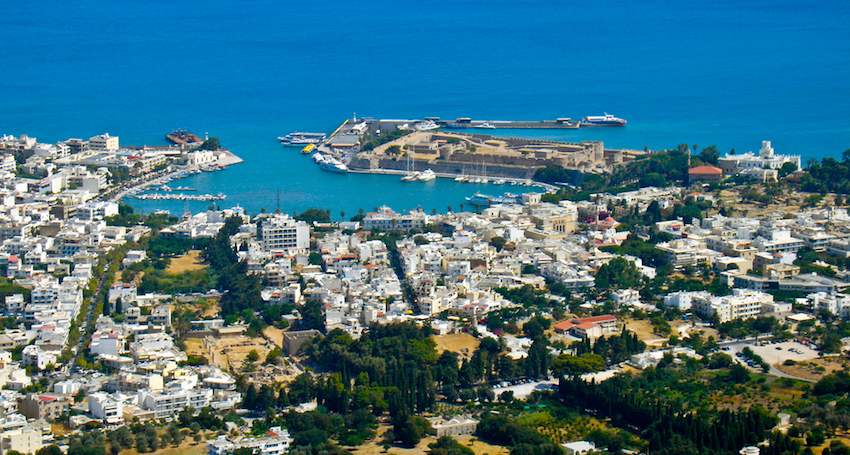
|
|
The city of Kos spreads
out in all directions from perfectly protected
Mandráki harbour, with Bodrum (a major day-trip
destination) just visible on the Asia Minor
mainland. Despite its size the town feels
low-density; thanks to the Italians it’s
rigorously planned, executed in two phases
either side of the 1933 quake. From 1926–29 and
again from 1934–39 they endowed it with
clusters of mock-Ottoman, Art Deco-ish and
Rationalist style buildings to meet both the
social and political needs of colonialism and
fascism – including a large central square,
today Platía Eleftherías, where crowds could be
harangued from a speaker’s tribune. Large areas
of archeological “park” were created by
removing the rubble of collapsed houses to
reveal ancient remains. Yet some care was taken
to preserve or highlight the castle and the
traditional quarters – the Muslim bazaar, and
the old blacksmiths’ quarter of Haluvaziá just
behind the port – which had survived the
tremor. Residential, cantonment-style suburbs
were laid out, particularly on the east, and
today their original landscaping has matured,
giving Kos the feel of a lush garden
town.
|
|
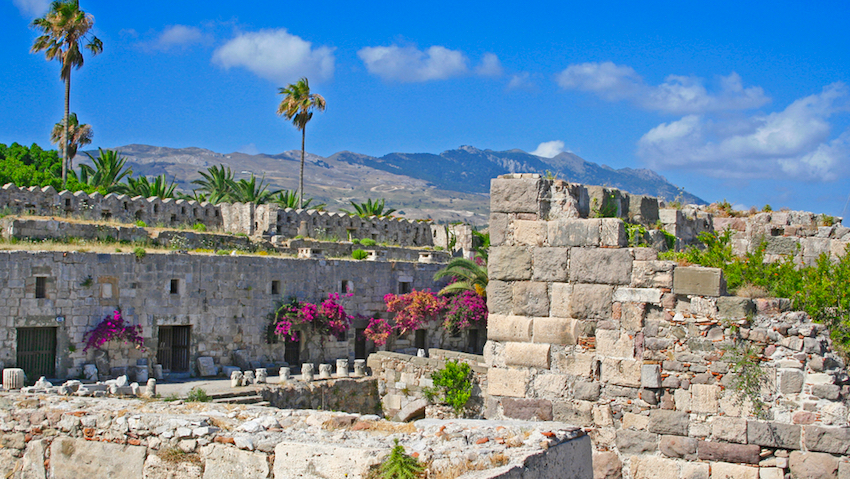
|
|
The Castle of the Knights
of Saint John (8am–8pm daily through October;
back to shorter hours (8.30am–3pm) in winter)
with its double fortification dominates the
harbor. The castle is linked by a bridge over
its former moat (now Finikon Avenue) to the
square where the so-called, very decrepit Plane
Tree of Hippocrates stands. In legend the great
healer taught under its boughs, though in fact
this is unlikely as the tree is only about 700
years old. Flanking the plaza is the Loggia
Mosque, from 1786; as at the contemporary
Defterdar Mosque on Platía Eleftherías, rent
from the shops on its ground floor goes to the
vakuf or local Islamic benevolent foundation.
Neither of these mosques is used much for
worship by local Muslims, though the
minaret-less Atik Mosque in the Ottoman bazaar
still functions normally.
|
|
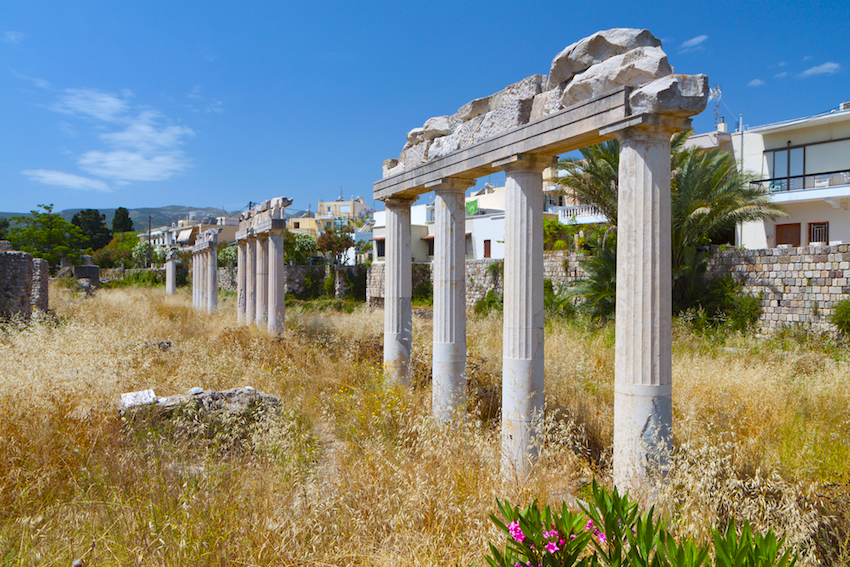
|
|
Just south of the harbour
lies the ancient agora (always
open), excavated after the 1933 quake: no
compelling sights other than foundations of a
Hellenistic Aphrodite temple and re-erected
Roman columns from a stoa, but a pleasant
wander nonetheless. The other, more extensive
archeological zone lies well inland beyond the
Ottoman bazaar, featuring the Xystos or
colonnade of a covered running track, and –
viewable from a slight distance – mosaics of a
boar hunt, gladiators and the nymph Europa.
There are more floor mosaics – of a tiger, and
assorted beasts attacking a goat and an
antelope – in the Casa Romana
(Tues–Sat 8am–7.30pm, Sun 1.30–7.30pm, Mon
closed), a 3d-century AD Roman villa across the
street, which finally re-opened in 2010 after a
lengthy refit. Also refurbished recently was
the contemporaneous Roman odeion adjacent – its
undercroft now houses a well-done mini-museum
(daily April–Oct 8am–8pm) on odeia in general,
and this one in particular. The main,
Italian-built archeological museum (Tues–Sun
8am–2.30pm) is up on Platía
Eleftherías, containing Hellenistic and
Roman statuary, as well as two more fine
mosaics. Just opposite, beyond the
Defterdar Mosque, is the
covered Italian market from 1934; lately its
produce stalls have been exiled in favour of
tourist stalls peddling honey and herbs – no
bargains here – but it’s still an atmospheric
spot to stock up on gifts.
|
|
Eating and Drinking in Kos
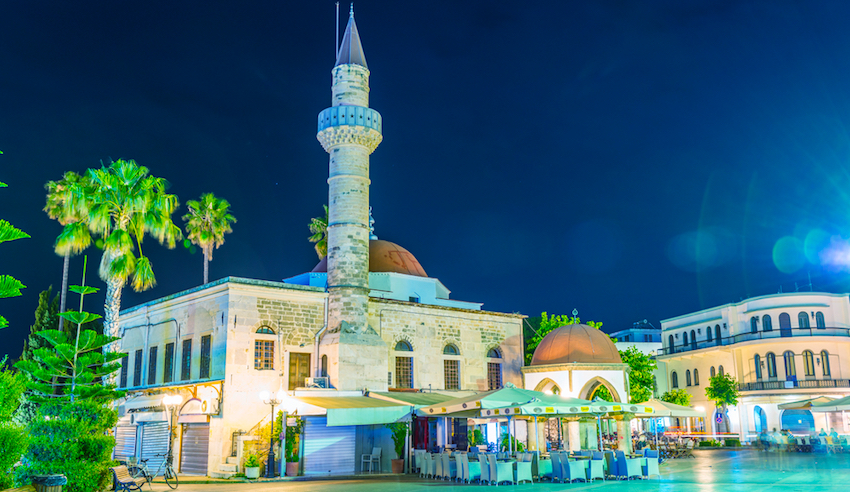
|
|
It doesn't take much nous
to work out that you’ll be ripped off at the
few surviving cafés and restaurants facing
Mandráki port; neither is the prevailing
Euro-grub in the westerly district towards
Lámbi much to write home about either. There
are numerous, far better options inland or just
back from the easterly beach along Vassiléos
Georgíou. At Ambavris (supper
only May–Oct), in the eponymous hamlet 500m
south of the Casa Romana, choose a medley of
their excellent mezédes (detailed properly only
on the Greek menu) served in the courtyard of
this lovely old house. An exception to the
pattern in the western suburbs is
Votsalakia at Avérof 10, a
good all-rounder taverna with views of the
ferries coming and going. The island’s
longest-running ouzerí is Pote tin
Kyriaki (supper only, closed Sunday,
also Mon–Thurs low season), hidden in the
Ottoman old town at Pissándrou 9; there are
starters like fennel pie and assorted sea food
at very attractive prices, washed down by
proprietress Stamatia’s potent tsípouro. The
town’s main see-and-be-seen venue,
H2O, at Vassiléos Georgíou 7,
has a fusion menu, minimalist decor and seating
on a deck over the water; diagonally across the
way, on the ground floor of the Triton Hotel,
Avanti is reckoned the
island’s best Italian diner and is always full
of locals. Products of the local winery,
Hatziemmanouil, are well worth trying,
especially their red labels.
|
|
For light refreshment,
Café Aenaos at the base of the
Defterdar Mosque is a great
people-watching spot, and brews kafé sti hóvoli
(traditional Greek coffee made on hot sand).
Right opposite Hippocrates’ plane tree, the
Law Court Café huddles under
Art Deco arches, doing coffees and cold drinks
at very fair prices for the location.
Besides the
mega-dance-venue X Club on the
west side of Mandráki, going in some
incarnation since the 1980s, nightlife in Kos
city clusters in two areas. The “Pub Lanes” of
Haluvaziá, especially
Nafklírou, have a fairly forgettable
selection of annually changing barákia with a
largely Dutch clientele; the most durable,
interesting and Greek club here is
Hamam at the east end of
things, installed in an old Turkish bath.
Another, Greek-preferred nucleus of night (and
day) life is Aktí Zouroúdi
behind Lámbi beach 2km north of town, where
Artemis by Heaven has two bars (1 poolside, 1
on the sand), tropical decor and chilled
playlist, or Mylos further
out, arrayed around an old windmill, with a
beach-café role by day and either live or DJd
events after dark, until dawn. Don’t drive
there – bicycle out and drink as much as you
like.
For the more sedately
inclined, there’s an excellent outdoor cinema
(May–Sept), the Orfevs, on
Fenarétis just in from Vassiléos
Georgíou; during the cooler months
screenings move to the indoor Orfevs on
Platía Eleftherías. As everywhere in
Greece, films are shown in the original
language (usually English) with Greek
subtitles.
|
|
Near Kos Town
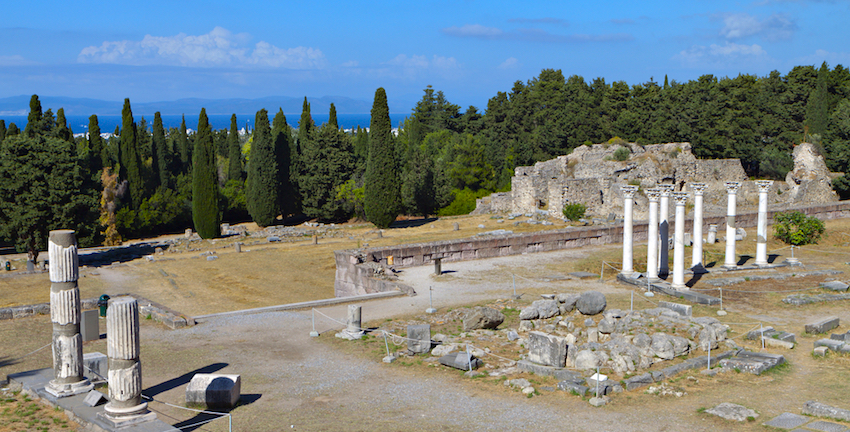
|
|
The ruins of the
Asklepion (summer 8am–8pm,
winter 8.30am–2.30pm; closed Mon all year) lie
4km southwest of town on a series of terraces
overlooking Kos and the Turkish coast.
Hippocrates was the first healer adopting a
rational approach to diagnosis, and the first –
as witness his treatise Airs, Waters and Places
– to lay stress on the importance of
environment in therapy. In its day – which
ended in 554 AD – the Asklepion was as much spa
and teaching facility as religious sanctuary,
and the site chosen had ample springs (which
ran above ground until recently – you can still
see fountain-niches and clay piping). The three
terraces, connected by broad stairways, feature
a Doric Temple of Asklepios on the top level,
and a Roman Corinthian temple partly rebuilt by
nationalistically minded Italian archeologists,
but don’t get your hopes pitched too high –
little else stands much above ground level, as
the crusading Knights thoroughly scoured the
site for ready-cut masonry.
The Asklepion is easy to
reach by bicycle, fake train or (in cooler
weather) on foot, passing through the partly
ethnic-Turkish village of Platáni (aka
Kermedés) with its active mosque and cluster of
Anatolian-style tavernas at the central
junction, of which Arap is the
most consistent, famous and open much of the
year. Hasan, across the street
from Arap, as a worthwhile, cheaper
alternative, with good kebabs and the odd
vegetable stew. Opposite, superb ice cream is
served at Paradosi. There were
once nearly 3000 island Turks living here and
in Kos town, but after the successive Cyprus
crises of 1963–74 numbers dropped to under
1000. Between Platáni and town are the adjacent
Muslim and Jewish cemeteries. The island’s 120
Jews were deported to their deaths at Auschwitz
during summer 1944, and the only other trace of
the long-running Jewish community is their
wonderful Italian-era synagogue on Diákou near
the “Pub Lanes”.
|
|
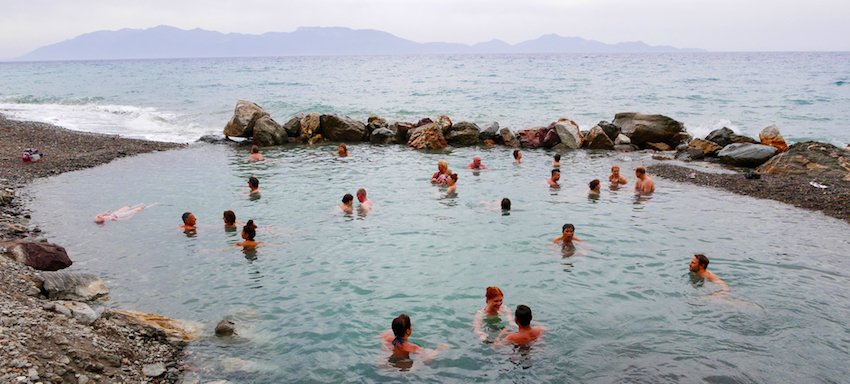
|
|
Besides Lámbi
beach, more sand stretches east, then
south, of the city in the area known somewhat
imprecisely as Psalídi. Much of it is
merely functional or monopolized by the resort
hotels which concentrate here; good, meaty
beaches with minimal wind scourging and easy
public access only begin once past the Oceanis
complex, up to the Ágios Fokás military
watchpoint. Just past a final cluster of hotels
at Ágios Fokás is the dirt-track turnoff for
the seaside hot springs of Bros
Thermá, one of the most popular
destinations on Kos, especially at dusk or on
moonlit evenings. Scalding water flows from the
base of cliffs into a 4-foot-deep pool
delimited by a ring of boulders which allows it
to mix with seawater to a pleasant temperature.
There have been recurring rumors, however, of
the place being developed as a spa with
regimentation and admission fee, so enjoy it
au naturel while you can.
|
Around the Island of Kos
|
|
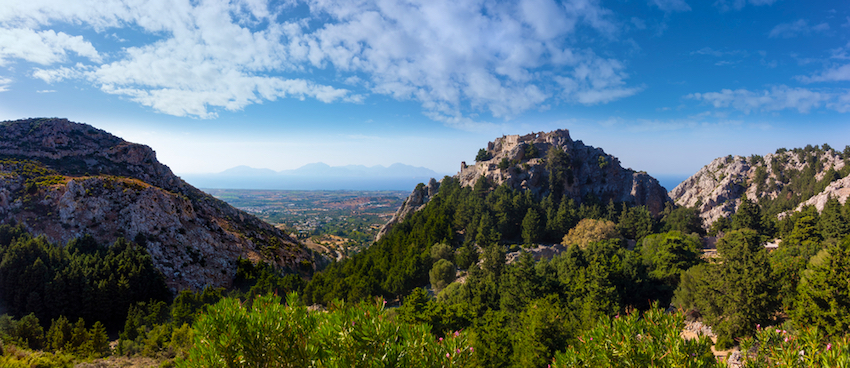
|
|
Mt Díkeos Villages
Forested, scenic Mt
Díkeos, the ancient Oromedon looming west of
town, relieves Kos from unrelenting flatness
and supports the half-dozen Asfendioú villages,
all now largely deserted but excellent examples
of whitewashed traditional housing. Parish
priest Father Kyriakos, at the Génnisi
Theotókou church in Lagoúdi with its
brilliant neo-Byzantine frescoes, claims that
the mountain takes is modern name (“just,
fair”) from its waters flowing usefully
northwest towards the agricultural plain rather
than pointlessly south into the sea. Ziá is the
most touristed settlement, thanks to half a
dozen coaches daily calling in for “sunset
tours” (though the views from most of the
Asfendioú region are spectacular). This has had
a predictable effect on quality at the
surviving tavernas (several have shut) but
Oromedon can still be highly recommended,
likewise the little secluded café
Neromylos, converted from the
last working watermill here – by the 1960s most
of the water had been channelled down to fields
and water-mains in the flatlands. Ziá also
marks the start of the hike up to 846-metre
Khristós peak with its pillbox chapel (August 6
festival) and 360° views over Turkey and the
Dodecanese; allow 3 hours round trip, and best
do this in spring or fall when temperatures are
mild and the air clear. Nearby Evangelístria
and Asómatos hamlets, the latter with a lovely
church, have proven popular with second-home
hunters but have no reliable tourist
facilities. West of Lagoúdi, a side road leads
up to Byzantine Paleó Pýli with its castle and
medieval churches, of which the lowest one,
Arhángelos, also has the most vivid frescoes.
Modern Pýli is by contrast a thriving, modern
place and boasts, in its Pigí district, perhaps
the best rural taverna on Kos, Palea
Pigi, where you can sample local
dishes like pikhtí (brawn) and
krassotýri (cheese marinated in wine)
in the shade of a giant Indian fig. Just below
is a wonderful, popular cistern-spring with
several lion-headed spouts.
|
|
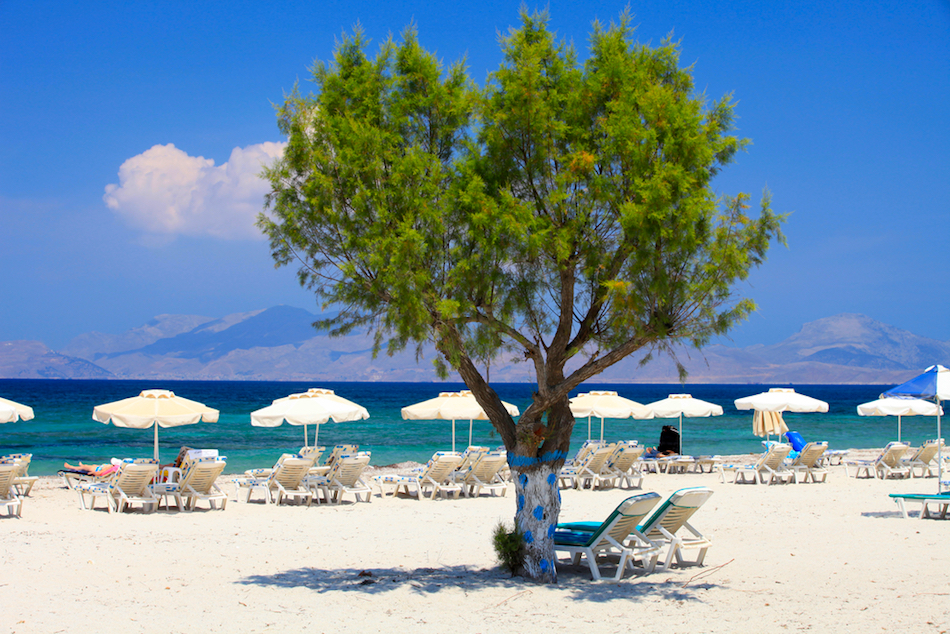
|
|
Kos-tal Resorts
Besides Psalídi, Kos has
plenty of attractive beaches on both its
windier north and more protected south coasts.
Most of them have some sort of water sports
available, be it windsurfing,
kayaking/canoeing, or jet-skiing (though I for
one find it difficult to qualify the latter as
a “sport”).
Closest to town on the
north coast is Tingáki, which
has historically had a big British clientele.
Just inland to the east is the excellent
Ambeli taverna, with more than
a nod to local recipes and an excellent wine
list (as you’d expect from a place called
“Vineyard”). There are great views across the
straits to the Bodrum peninsula and the little
Greek islet of Psérimos.
Marmári, the next resort west,
has a preponderance of all-inclusive hotels
aimed in the past at Germans; between the two
is the salt marsh of Alykí, which retains water
well into summer. This used to be a major
stopover for flamingoes from December to April,
but they haven’t appeared in some years – chalk
it up to global climate change.
Mastihári, southwest of
Marmári, also has its share of new monster
hotels at the outskirts but despite that is
probably your best bet if showing up without a
room reservation in summer – it’s Kos’ second
port, with several daily ferries to
Kálymnos (keyed to arrival times of
domestic flights from Athens), and still
retains some character of a “real” town. Good
affordable accommodation can be found at the
south end of the ridge above the unusually
broad beach. Just inland from the ferry jetty,
Makis is unbeatable for fish,
while at the south end of the beach strip,
Traditional House bakes its
own bread and serves own-grown veggies.
|
|
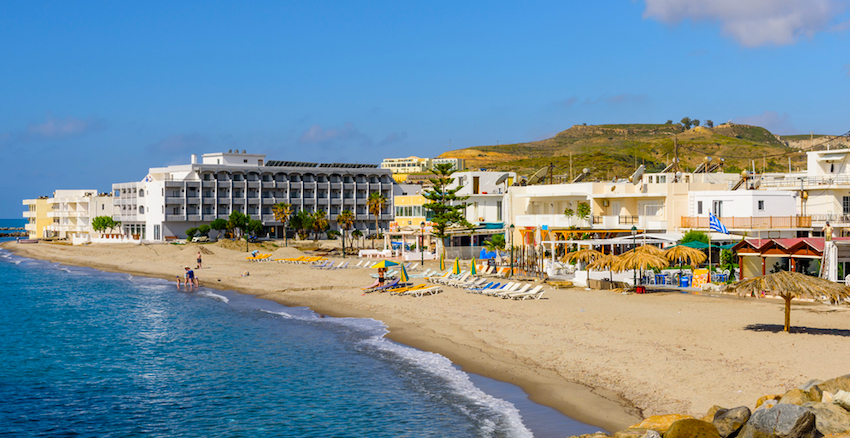
|
|
From Marmári, roads lead
south through Andimáhia – the
largest inland village, next to the airport and
near another Knights of St John castle
sometimes used for summer concerts – to
Kardámena, the island’s
second-ranking, if rather downmarket, resort,
famous for its Brit-pitched nightlife. Clubs,
especially in these straitened times, come and
go but here to stay apparently are the
Downtown Club, a basement joint as
good as its motto (“cheesy chart music”), and
the long-running Starlight Club at the
outskirts, with theme nights and imported UK
DJs. Don’t expect culinary distinction, or much
comfort in lodging; Kardámena beach, however,
is sandy and long. There are expensive
excursion boats, leaving in the morning, for
Níssyros island opposite; less publicised is
the Nissyrians’ far cheaper shopping kaïki,
which chugs away at mid-afternoon (though that
means you intend to overnight on
Níssyros).
|
|
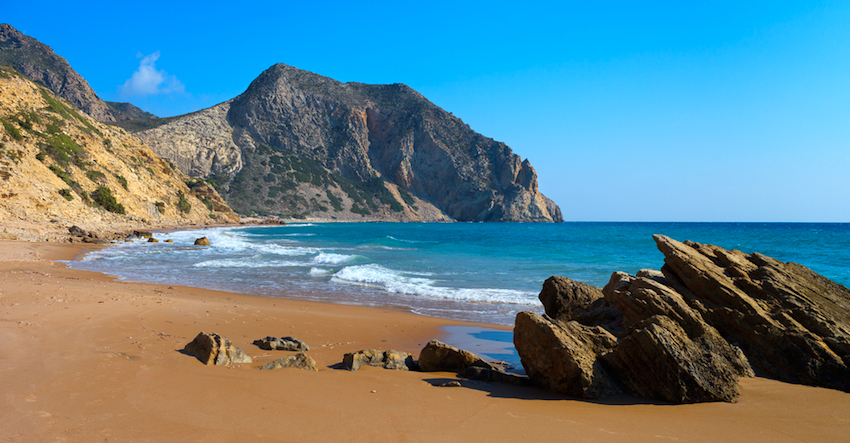
Paradise
Beach
|
|
On a clear day Níssyros is
also prominent on the horizon seen from the
sequence of miraculously undeveloped beaches
west of Andimáhia. My favorite is
“Magic” (officially Polémi),
with a full-service taverna uphill, a nudist
zone (“Exotic”) on the east, and no jet-skis –
which rather blight “Sunny”
(Psilós Gremmós) and Langádes
further along, although their sand and
juniper-backed scenery is superior.
“Paradise” (Bubble Beach), so
named for volcanic gas-vents in the shallows,
is oversubscribed and overrated, though
“Kamila”/Camel just beyond is
much less visited.
|
|
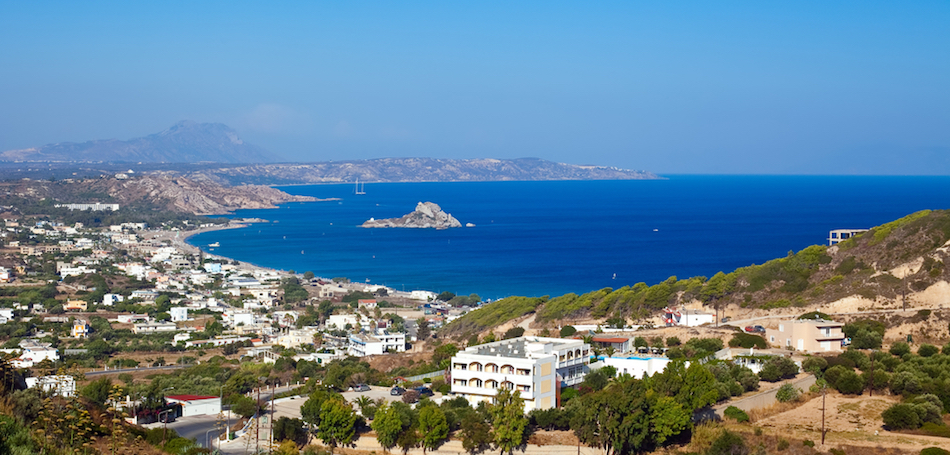
|
|
Past these, an
inconspicuous access road leads around a giant
Club Med to the most romantically set of Kos’
three basilicas, Ágios Stéfanos –
though recent years have seen some of its
columns toppled and its famous mosaics covered
in protective gravel. There’s good snorkelling
– unusually for Kos – between the little beach
below and swimmable-to Kastrí
islet. Beyond sprawls Kamári,
a resort hardest hit by the recent slump –
plenty of abandoned building sites – and
lacking much distinction other than excellent
windsurfing opportunities.
|
|
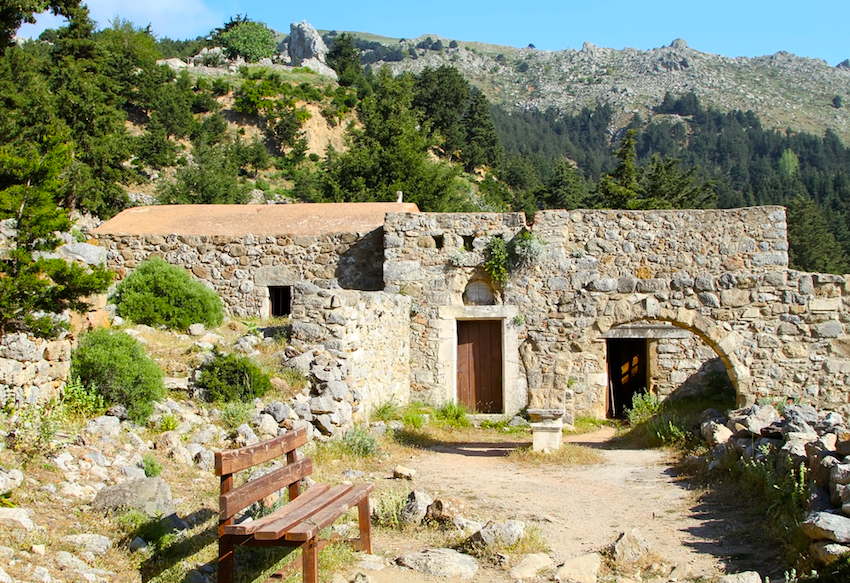
|
|
In Paleó
Pylí, Arhangelos chapel has had
much-needed repairs but sadly is now locked so
the frescoes are not visible for now (unless a
warden with keys is appointed to replace the
evzone-costumed goatherd who poses with
tourists for pictures at the base of the stairs
up, all the while yelping “Autentico!!!
Tradizzzzzionaaaaallllleehh!!!”).
Puh-leeze.
In
Amanioú, the village closest
to Paleó Pylí, maybe schedule a lunch stop at
the Paleo Pyli taverna, where
Mastihari-based fisherman Giorgos does
excellent, cheap grilled fish (his son does
most of the catching now, daily).
|
|
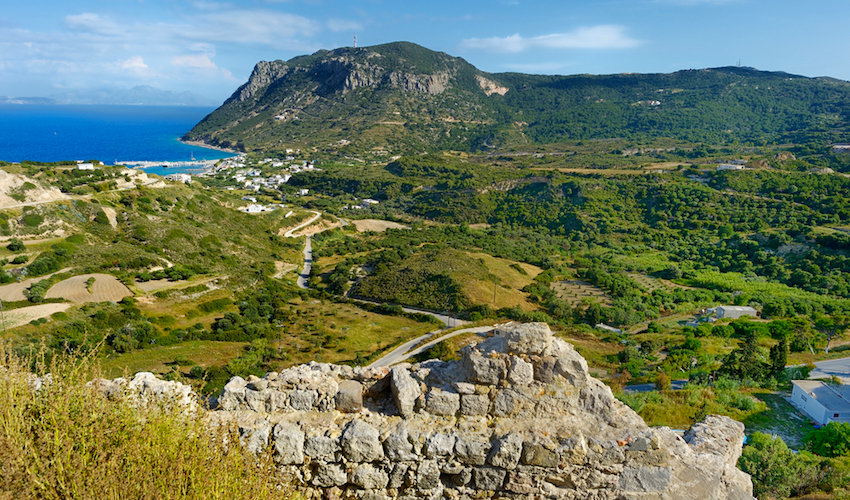
|
|
The Wild West
The large village of
Kéfalos, uphill from Kamári, dominates the far
southwest of Kos. It’s kind of a nondescript
place – the Knights couldn’t be bothered to
build a proper castle to defend it – but the
inevitable gateway to the wild terrain beyond.
Just south are Panagía
Palatianí, a strange Byzantine church
built amidst the ruins of an ancient temple,
and ancient Astypalaia, of
which only a late Classical theatre with two
rows of seats overlooking Kamári bay remains. A
right fork in the paved onward road system
leads to the rural chapel of Ágios
Theológos, near a namesake taverna which
ruthlessly exploits its monopoly and above a
wave-bashed beach where boogie-boarding is
practiced. The other branch of the paved road
ends at Ágios Ioánnis Thymianós monastery, from
where a dirt track heads off towards
spectacular, sandy but unamenitied Hilandríou
beach, tucked into a fold of precipitous Cape
Kríkellos.
|
Practical Information for Travelers to
Kos
|
|
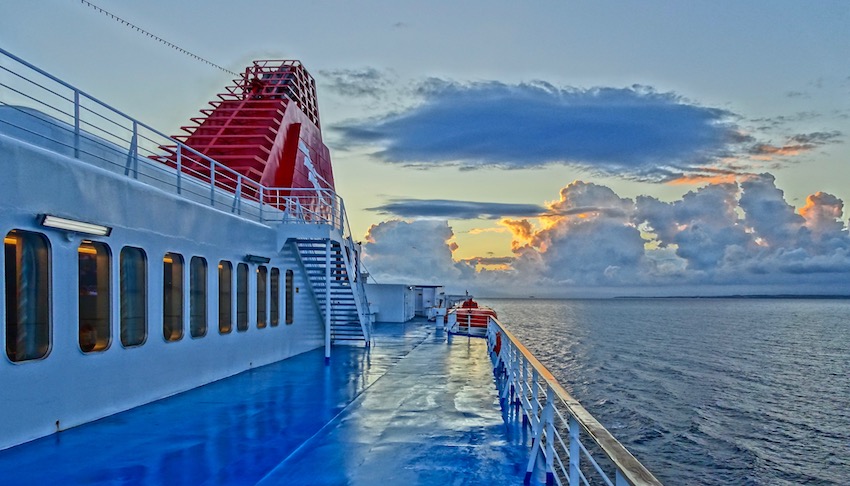
|
|
Getting to Kos
Ferries
from Piraeus to Kos leave daily in the
summer season and 3 or 4 times a week in the
off season, usually in the early evening, with
consequent small-hours arrival. Islands on the
same route may include Sýros, Náxos, Páros, Amorgós, Santoríni,
Pátmos,
Léros,
Kálymnos and
Rhodes,
though usually you get “semi-direct” services
that omit some or most of these. If at all
possible, opt for Blue Star Ferries departures.
Sadly, the former useful hydrofoil service
between Kos and Sámos via all
intervening islands has been suspended; the
only approximate substitute are the catamarans
Dodecanese Pride and Dodecanese Express, as far
as Pátmos and Lipsí/Agathonísi.
You can find ferries to and from Kos and book
them at Ferryhopper.com or by
booking hotels with a Greek
travel agency.
Excursion boats leave most
mornings for the nearby islands of Níssyros,
Psérimos, Platý and Kálymnos,
though if you want to spend a full day on
Psérimos you can only do this from Kálymnos.
Most years there is usually a subsidized minor
ferry route from Kos town to Níssyros and
Tílos –
much cheaper than either the excursion boats or
the catamarans. For
Bodrum in Turkey, there can be up to 3 or 4
daily (2 morning, 2 afternoon) departures, and
the crossing is the least expensive of all the
island-Anatolia routes thanks to modest port
taxes – outside of peak season, 25 to 30 euro
return is not an unusual fare.
There are up to five
flights daily between Athens and Kos in each
direction, on either Olympic and Aegean, which
merged in October 2013. Beware of their new
baggage policies – the cheapest fares have, as
default setting, no checked baggage allowed –
you have to add it for 15 euros online, or pay
25 euros at the airport.
For those who want to book
Kos with the assistance of a Greek travel
agency you can use
Matt Barrett's Create-an-itinerary form and
click on the islands you want to visit and the
amount of days you want to spend on each island
and you can get a price, or they will tell you
if what you want to do is even possible. It is
free and you are under no obligation to
purcghase anything. For travel agencies in
Greece that book Kos see
Matt's Travel Agents Page.
Getting around Kos
Especially in Kos town,
car, scooter and (unusually) bicycle rental
places abound. Along with Tríkala and Édessa,
Kos is among the few cities in Greece that
actively makes provision for cyclists, with a
joined-up bike-path system extending from the
far reaches of Psalídi to Tingáki, and for a
few euros a day the flattest bits of the island
are yours to pedal around. The accident rate
for all motor vehicles – especially on the
dangerous central trunk road – is off the
charts, especially in August when particularly
reckless Athenians show up, so drive
defensively and NEVER drunk – police traps
screen for this and fines are astronomical
(even if you don’t get thrown in the slammer).
Taxis are common but expensive – nearly 35
euros from the airport to Kos city, for
example. There are several KTEL buses daily
between the airport and town, but these are
designed to dovetail with domestic, not
overseas, flight arrivals. Besides KTEL
departures to the remoter beach resorts
(frequent) and hill villages (infrequent),
there’s a very efficient municipal bus service
with the initials DEAS, serving all points
between Psalídi and Lámbi.
Welcome Pickups has recently added Kos to their list of islands where they can provide transfers between the airport, ports, hotels and villas.
Where to Stay
There are hotels of all
categories in Kos town and its flanking resorts
of Psalídi and Lámbi. Mastihári, Kardámena and
Kamári offer more modest lodging on the whole.
The major visitor dilemma on Kos is whether to
stay in Kos town for superior dining and
nightlife, going to the beach resorts by day,
or to stay by the sand and hit the town by
night. Here you can probably have it both ways
by staying in a really nice hotel on a beach
close to town for a very good rate. For a
selection of hotels on the island, use Matt's
Hotel Search where you can read hotel
reviews and book them. I recommend booking with
reliable
travel agencies in Athens rather then
directly with the hotels since it will cost the
same, and the travel agent can help you with
other aspects of your trip like ferry or
airplane tickets, hotel in Athens and any
snafus that occasionally happen (missed or
canceled flights, ferries or lost bookings).
Not to mention they are a valuable resource
that can answer your questions and help you
create the itinerary and find the hotel that is
best suited to you.
Marc Dubin
first visited Greece in 1978, fell in love with
it, and returned almost yearly until he began
living much of the time on Samos in 1989. He
has written for numerous travel publishers –
notably Rough Guides and Insight Guides – and
on a variety of topics ranging from renovating
old Greek houses and Greek cuisine to
back-country trekking and Greek music. Marc has
also compiled two CDs for World Music Network,
Rough Guide to Rebetika and Rough Guide to
Greek Café. To contact Marc with offers of
writing jobs or praise you can e-mail him
through matt@greecetravel.com
|
Matt's Suggested Hotels in Kos
|
|
Here are some hotels
in Kos that you can book directly through
Matt's Hotel Booking
Page if you don't think you will need a
travel agency. If you click on the name of the
hotel you can get more information, photos and
book it now. You may notice that a 4 and 5 star
hotel in Kos will cost the same as a 2 star hotel
in Mykonos or Santorini. You can also find
villas, apartments, self-catering, holiday homes
and Air BnB style accommodations by using
Matt's Holiday Home
Search
or Matt's Hotels of Greece Kos Page |
|
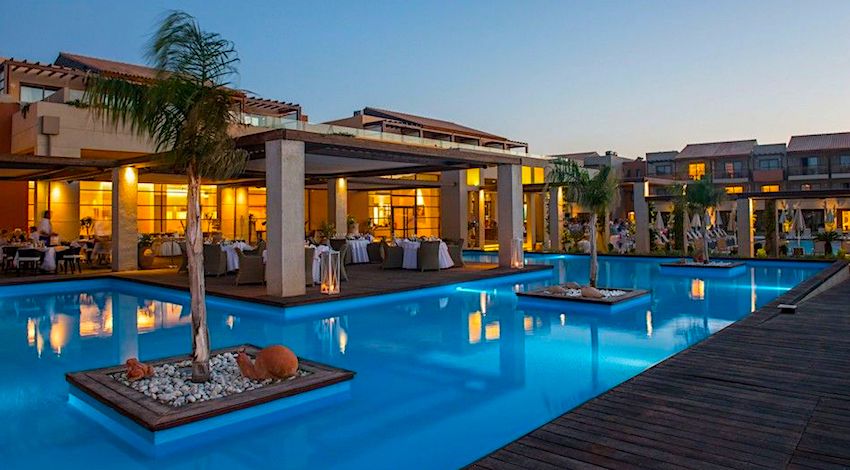
Astir Odysseus Kos Resort & Spa 
Astir Odysseus Kos Resort & Spa is a 5 star hotel constructed in 2009, in Tingaki area. Just 5 km from the historic center of Kos town and 22 kilometers from the international airport of Kos, Astir Odysseus Kos consists of 337 rooms & suites, 3 conference halls, Spa center with indoor pool, restaurants & bars, sports facilities, water sports, 3 outdoor pools with 2 open air Jacuzzi in the main pool, 2 children’s pool and mini club.
|
|
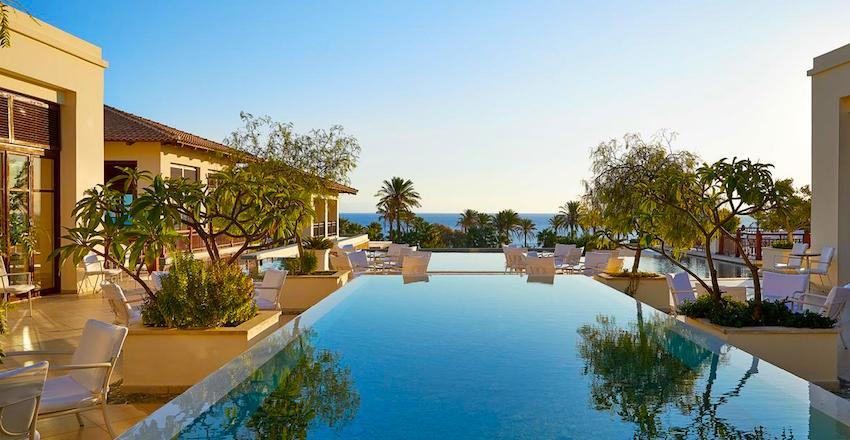
Grecotel Kos Imperial
Thalasso 
With its own private
beach, this 5-star water paradise features
state-of-the-art business and leisure
facilities, all set within luxuriant extensive
lawns that afford plenty of sunbathing
areas.
A water wonderland effect is created by a
series of free-form pools linked by rivers. The
spacious hotel embraces the gentle hillside and
quiet beach area of Psalidi
overlooking the sparkling Aegean.
There are plenty of sports and entertainment
facilities at the hotel and for those who
relish a lively nightlife, Kos Town is a mere 4
kilometres away. After a game of tennis with
your own personal coach, rejuvenate those
muscles with a massage in our spa, offering a
range of treatments of therapies. Wired
internet is available in public areas and costs
EUR 5.00 per hour.
|
|
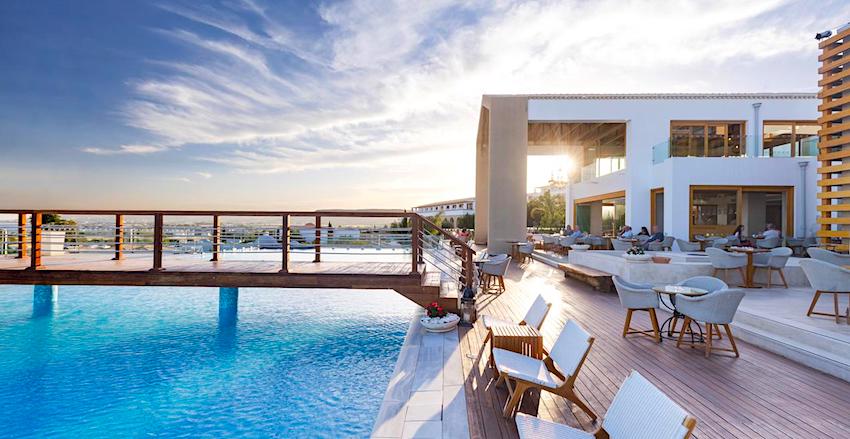
Mitsis Blue Domes Resort &
Spa 
5-star beachfront Mitsis
Blue Domes Resort & Spa features a
650-yard-long pool complex of 8 large pools and
6 sharing pools. The all-inclusive hotel near
Kardamena offers guests 10
dining options and 6 bars. The fresh and breezy
rooms are fully air-conditioned with mini-bar,
26-inch satellite LCD TV, and internet access.
Room service is provided 18 hours a day and
each room has a private balcony or terrace.
Wi-Fi is free in communal hotel areas. The main
restaurant serves American buffet breakfast and
late Continental breakfast. All meals are
served in a show cooking buffet style. Every
night, guests have the possibility to taste
specialties from Greek and international
cuisine, such as, Italian, Asian, Mexican and
sushi specialties. A full range of beauty
services are on offer at the on-site spa. A hot
tub, massage rooms and indoor pool are
featured. Sports facilities include water polo,
tennis, pedalos and aerobics. Younger guests
will enjoy the sweet-water children’s pool with
waterslides, playrooms and animation
program.
|
|
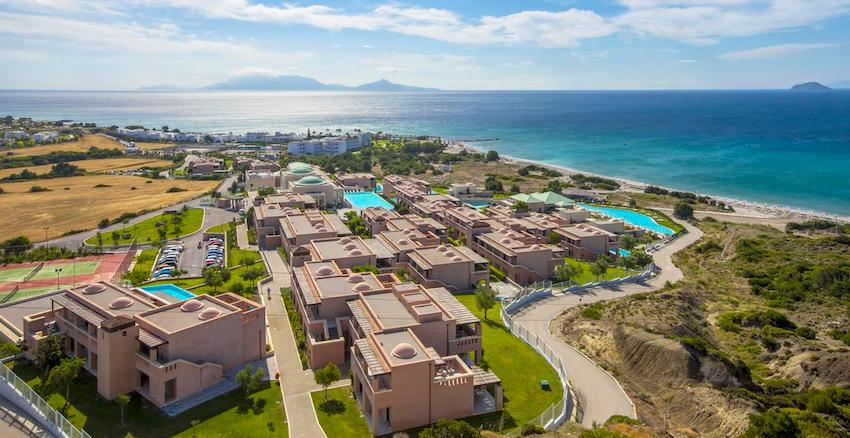
Helona Resort

Overlooking its private
beach, the luxurious Helona Resort offers
beautiful pool areas, 2 Jacuzzis, children’s
entertainment and a range of beauty and
wellness treatments, with magnificent views to
the sea near Kardamena. Helona
Resort offers a peaceful and luxurious retreat
away from the more touristy areas of Kos. Enjoy
beautiful views to Nissyros Island and the
Aegean Sea from the private beach, whilst
relaxing on complimentary towels and sun beds.
Helona Resort boasts an elegant combination of
Italian and Aegean architecture to create a
stylish holiday retreat. Relax in the comfort
of your well-appointed room and watch a DVD.
Relax in the Jacuzzi or around one of the
swimming pools or man-made lagoons. The
children can join in the organised fun at
Helona Resort’s mini club while you enjoy an
aromatherapy massage or get pampered at the
beauty salon. Enjoy delicious Greek and
international cuisine as part of the half-board
service. There are 3 bars to choose from, each
with a different ambience, providing plenty of
on-site entertainment for all the family. A
public bus service also runs from the resort to
Kardamena Village.
|
|
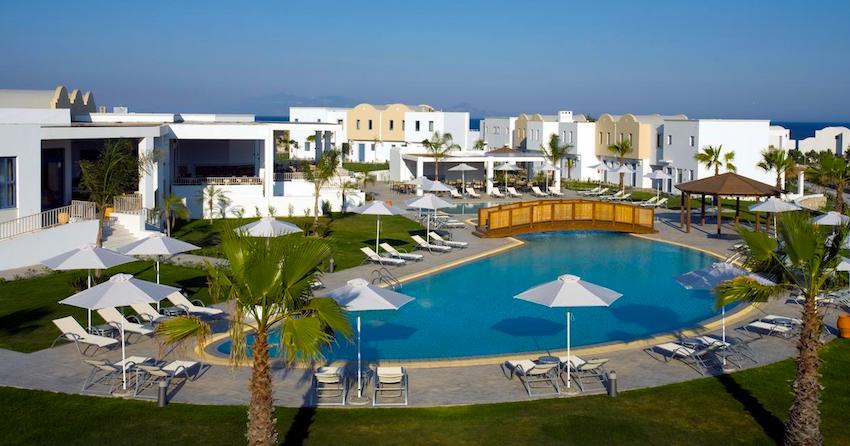
Lakitira Suites

This small complex is the
perfect hideaway for those who want to unwind
and relax and is walking distance from the
unspoilt Helona Beach. Ideally located on the
south-east coast of Kos, in a small valley
surrounded by low hills, Lakitira Suites makes
a fine base from which to explore the rest of
the island. The nearby village of
Kardamena is only 3 km away.
You can hire a car or a bike from the hotel and
discover the island at your own pace. Back at
the hotel, Lakitira Suites has a multi-purpose
sports area for guests who want to play tennis,
volleyball or mini soccer. Then at the end of a
busy day you can retire to your 5-star standard
accommodation, elegantly decorated with top
quality furniture and materials to provide lots
of space for you to feel comfortable and
relaxed. Wireless internet is available in
public areas and costs EUR 5.00 per
hour.
|
|
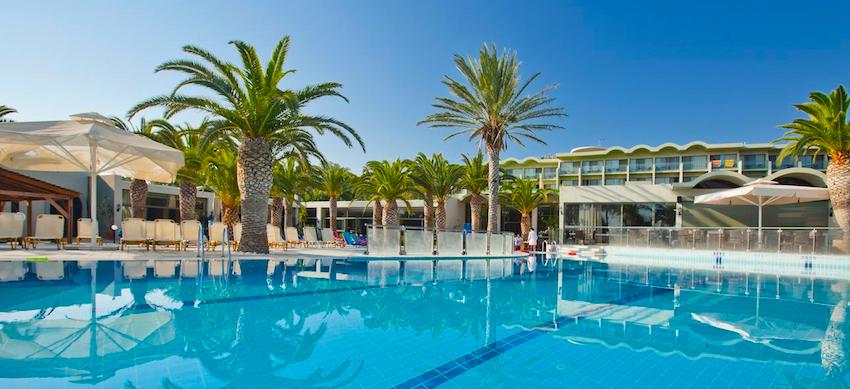
Kipriotis Hippocrates Adults Only
Hotel 
Located on the east coast
of Kos, separated from the beach just from the
coast road alone (approx. 200M) and
conveniently located only 3km from Kos
town, Kipriotis Hippocrates Hotel is a
charmed 4* hotel that offers relaxation in a
great holiday environment. Enjoy the lovely
scenery in the region of Psalidi while
sunbathing around the nice outdoor swimming
pool, that provides a separate childrens pool,
a sun terrace with sun loungers and parasols
(free by the pool, extra charge on the beach)
and a pool snack bar. Kipriotis Hippocrates
Hotel is surrounded by well-kept gardens and is
ideal for leisure travellers and families that
enjoy a casual and familiar atmosphere. The
buffet restaurant in the Kipriotis Hippocrates
Hotel serves a variety of international and
Mediterranean dishes.
|
|
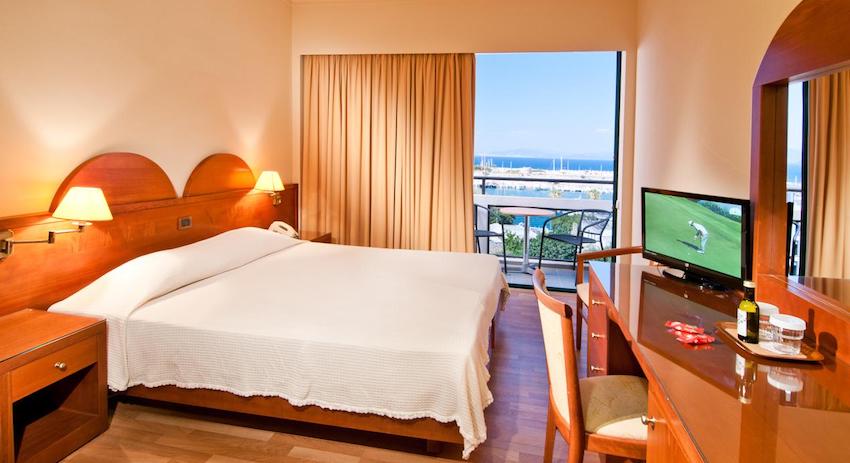
Alexandra Hotel and
Apartments 
Excellently located in the
centre of Kos town and just
200 metres from the harbour, the Alexandra
Hotel is the highest building in Kos, offering
stunning views and quality leisure facilities.
Guests can enjoy a tasty buffet breakfast
before relaxing around the lovely pool area.
Alexandra Hotel provides excellent conference
facilities for all types of business functions.
After a day of meetings or sightseeing, guests
can burn off some energy in Alexandra’s
well-equipped fitness room. Those who need to
further relax can enjoy some time in the sauna,
before resting in their spacious suite. Guests
can take a leisurely stroll from Alexandra
Hotel to the nearby Kazouli Square and the
archaeological museum. There are also plenty of
local shops and taverns within walking distance
and organised beaches are just 400 metres
away.
|
|
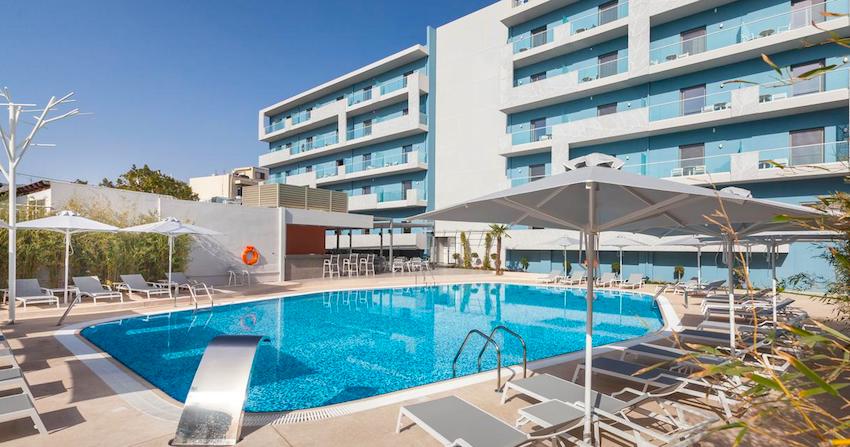
Blue Lagoon City
Hotel 
Centrally located in
Kos Town, only 200 meters from
the port and a 6 minute walk to the beach, Blue
Lagoon City Hotel features a swimming pool, a
poolside bar-restaurant, and a spa area with
gym and indoor pool. It also includes a lobby
bar, and a main restaurant serving buffet
breakfast. The rooms and suites of Blue Lagoon
are air conditioned and equipped with a fridge,
electric kettle and a TV. The private bathroom
comes with shower and a hairdryer. Guests can
relax at the sun loungers by the pool, while
younger guests can swim safely in their own
pool. The welcoming lounge area offers 2 TV
corners. Snacks can be enjoyed for lunch in the
pool bar-restaurant, while a a la carte dinner
is served in the main restaurant. Drinks,
cocktails and coffee are available by the pool
and in the lobby bar. Blue Lagoon City Hotel
can provide bicycle and car rental
services.
|
|
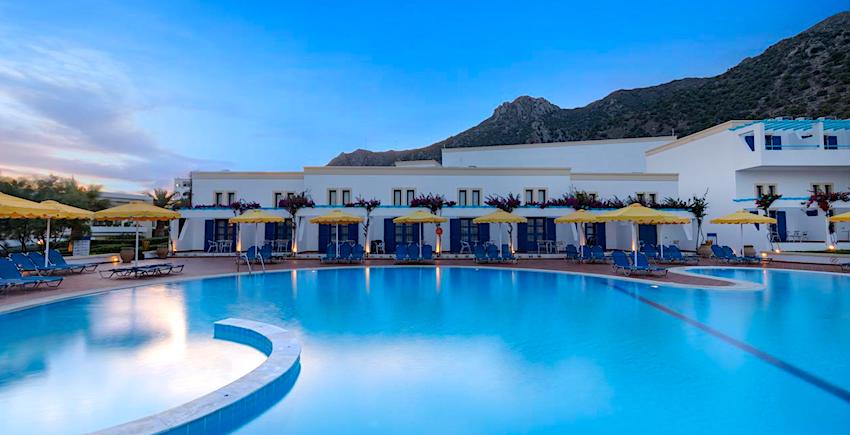
Mitsis Norida Beach
Hotel 
Mitsis Norida Beach Hotel,
right on a sandy beach, features an open air
theater, 3 restaurants and 7 bars. The hotel is
found only 4.8 km from
Kardamena and 30.6 km from the
town of Kos.The hotel has 455 individually
designed guest rooms overlooking its landscaped
grounds or the sea. Room features include
private bathroom with hairdryer, minibar and
satellite TV. Guests of all ages can choose
between the 2 outdoor swimming pools, a
relaxation pool, water slides and the beautiful
pebble beach. The endless menu of activities
includes 2 tennis courts, beach volley, water
polo and basketball facilities. The
all-inclusive Norida Beach features a main
dining restaurant, a tavern and Chinese
restaurant plus several other food &
beverage options scattered around the resort.
Drinks, snacks and meals are available
throughout the day at no extra charge. Mitsis
Norida Beach Hotel welcomes families with a
dedicated kids and teens activities program
offering imaginative activities for children of
all ages.
|
|
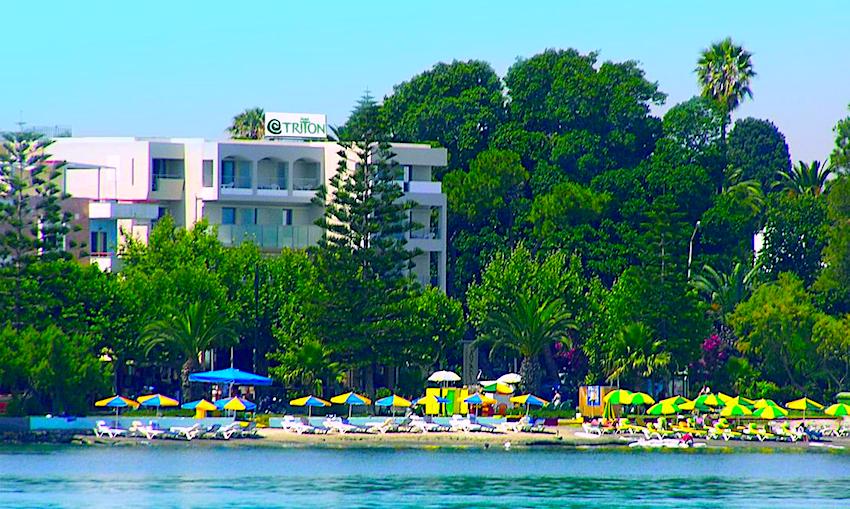
Triton Hotel

Triton Hotel is located
directly across the road from the main beach in
the centre of Kos town and
next door to a peaceful park. Triton has
magnificent sea views and is well known for its
warm hospitality and staff, who will make you
feel right at home. It is a friendly,
family-run business, in an excellent location
for those who prefer to be in the city centre
and still want to enjoy the lovely beaches of
Kos Town. Internet via modem is available in
the hotel rooms and is free of charge. Wireless
internet is available in the entire hotel and
is free of charge.
|
|
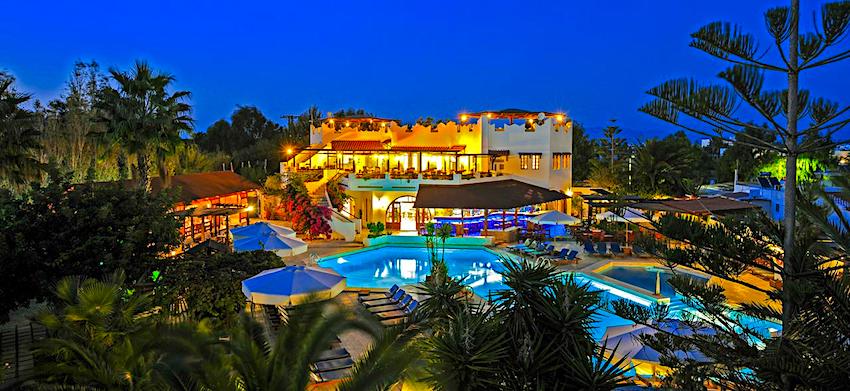
Gaia Garden

Gaia Garden is a charming,
down-to-earth hotel located in Lambi, a quiet
area of Kos Town.
It consists of a main house surrounded by
several bungalows, all nestling in the
beautiful gardens created by the owners. Guests
of Gaia Garden have the pleasure of enjoying
this palm-filled oasis from the comfort of
their own patios. The hotel offers free Wi-Fi,
as well as laptops for rent. Wireless internet
is available in the entire hotel and is free of
charge.
|
|
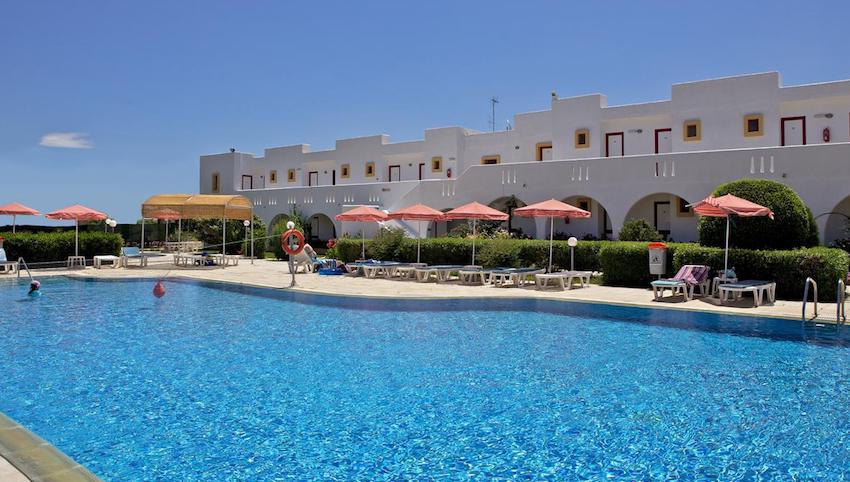
Sunny View
Hotel 
Set in open countryside, a
stone’s throw from the beach, this family-run
hotel occupies a tranquil position, just 2.4 km
from the center of the lively center of
Kardamena. Located on the
south coast off the island of Kos, which is
part of the Dodecanese (12 islands), Kardamena
is a small village surrounded by the Aegean
Sea. It provides a range of restaurants, bars
and shops to please every taste and preference.
At Sunny View you can unwind, relax and forget
all your troubles in a carefree environment. A
refreshing alternative to larger chain hotels,
the hotel provides a personal and relaxed
service, complemented by family warmth,
cleanliness and friendly staff.
|
|
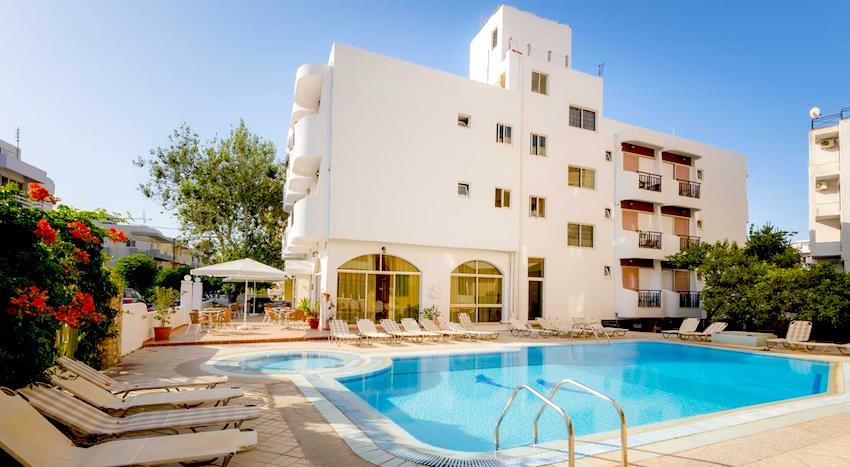
Captain's Hotel

Captain's Hotel is
centrally located in Kos town,
approximately a 5 minute walk from the harbour
and about the same distance from Kos Town
beach. All rooms are comfortable, equipped with
all modern amenities that guarantee a pleasant,
comfortable stay. Guests may relax by the
swimming pool and enjoy the sun in the sun
terrace. The hotel is within easy reach from
the shops, bars, restaurants and the Old Town.
Wireless internet is available in public areas
and is free of charge.
|
|
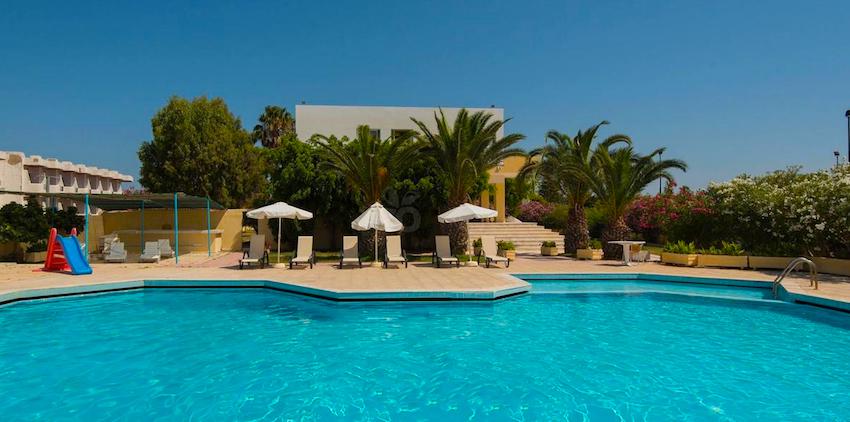
Leonidas Hotel &
Studios 
Located 800 metres away
from the nearest sandy beach, this hotel is
also just 400 metres away from the nearest bus
station and 900 metres away from Kos
city centre. Leonidas Hotel and
Studios is the most popular 2-star hotel on Kos
Island and was fully-renovated in October 2007.
Our hotel combines the benefits of a quiet
location and the convenience of reaching the
much-frequented roads and squares of the island
in just a few minutes. We offer a very warm and
friendly atmosphere that quickly makes you feel
at home. Between swims or sightseeing tours,
you can entertain yourselves at the bar and
enjoy delicious fruit cocktails. A rich buffet
breakfast is served every morning from 08:00
until 09:30 in the breakfast room. Wireless
internet is available in public areas and is
free of charge.Wired internet is available in
public areas and costs EUR 3.00 per
hour.
|
|
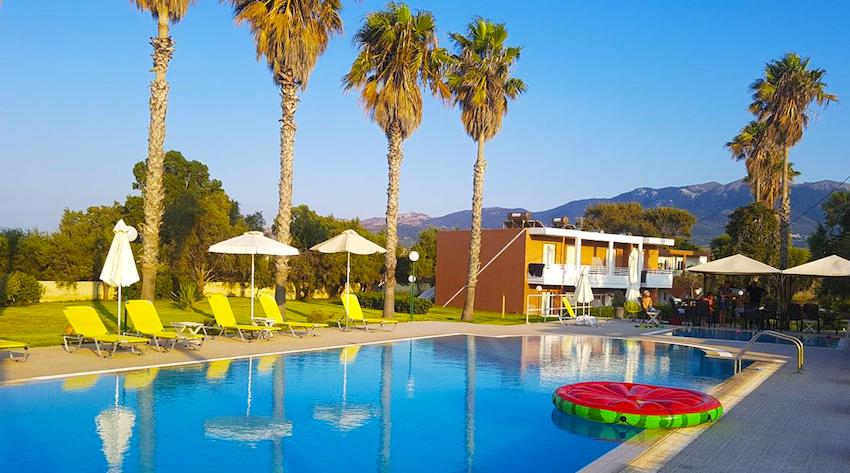
Jonathan Studio
Apartments
For over 15 years,
Jonathan Apartments have welcomed guests to a
beautiful environment, offering you relaxation
right next to the beach of
Tigaki, on the unique island
of Kos. Ideally situated, we make a fine base
from which to explore the rest of the island.
The apartments are only 35 metres from the
beach. Tigaki is the first seaside village you
will meet when leaving the town of Kos. There
you will find several beaches with crystal blue
waters and warm white sand. In the centre of
Tigaki, there are also bars, restaurants and
supermarkets. Tigaki itself offers a great
location, 10 minutes by car from the centre of
Kos, 15 minutes from the airport and 10 minutes
from the port.
|
|
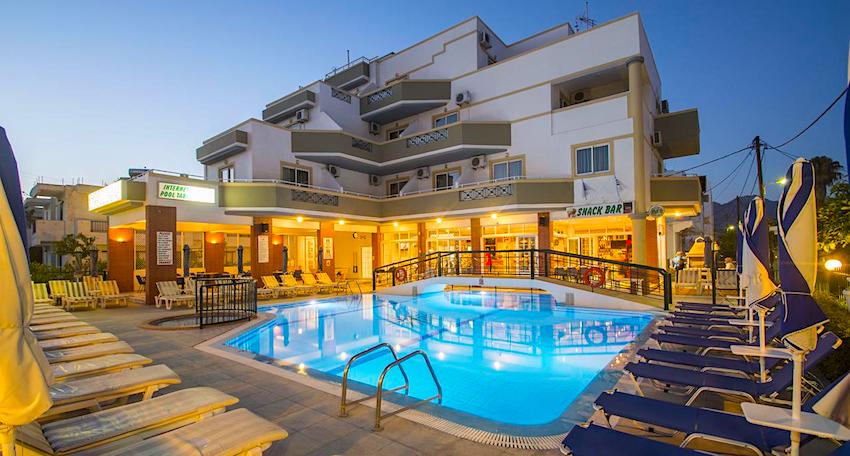
Agrellis
Apartments
In the lively Kardamena of
Kos Island, just 92 m from the beach, Agrellis
Apartments features a pool with terrace and a
snack bar. It offers a game room and
accommodations with a balcony. Enjoying views
of the Aegean Sea, the pool or the mountain,
the studios and apartments of Agrellis have
tile floors and wood furnishings. Each has a
kitchenette with dining area and a private
bathroom stocked with free toiletries. A
fridge, stove and a telephone are available. A
continental and an English style breakfast are
served daily at the dining area. Guests can
also enjoy a coffee, a drink and a cold snack
at the snack bar by the pool. A variety of
restaurants, bars and shops can be found within
519 m from the property.
|
|

Agrellis
Apartments
In lively
Kardamena, just 92 m from the
beach, Agrellis Apartments features a pool with
terrace and a snack bar. It offers a game room
and accommodations with a balcony. Enjoying
views of the Aegean Sea, the pool or the
mountain, the studios and apartments of
Agrellis have tile floors and wood furnishings.
Each has a kitchenette with dining area and a
private bathroom stocked with free toiletries.
A fridge, stove and a telephone are available.
A continental and an English style breakfast
are served daily at the dining area. Guests can
also enjoy a coffee, a drink and a cold snack
at the snack bar by the pool. A variety of
restaurants, bars and shops can be found within
519 m from the property.
|
|
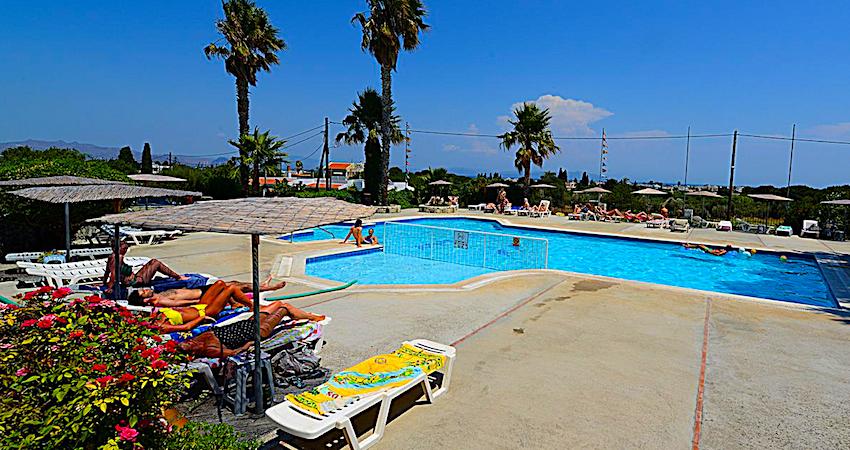
Gelli Apartments
The family-run Gelli
Apartments enjoy an elevated position with
panoramic views over the Aegean Sea,
Kos Town, local mountains and
Turkey. A 15-minute walk will take you to Kos
Town center. The main port is 18 minutes’ walk
away. Bright and airy, Gelli apartments open
out to a balcony enjoying garden views. Each is
fitted with an electric kettle, cooking hobs
and mini fridge. All units come with a private
bathroom with shower and hairdryer. Gelli
guests are welcome to use the swimming pool and
bar of the nearby Ampavris Family Apartments.
Free on-site parking is also available. The
seaside village of Tigaki is a 15-minute drive
away from the complex. Kos Airport is within 14
mi.
|
|
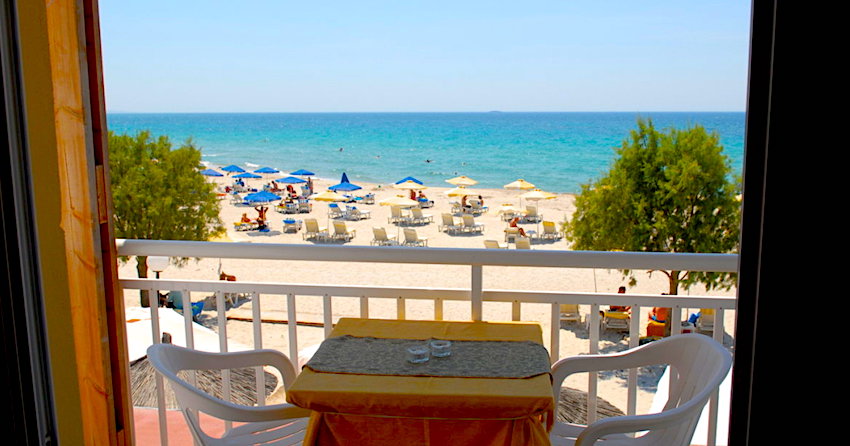
Panorama Studios
Occupying a prime
beachfront location, the Panorama Studios is a
small family-run complex overlooking the lovely
sandy beach of Mastihari. The
property consists of just 8 open-plan studios
and accommodation. Each studio features a
sleeping area with twin beds, an en-suite
shower room, a kitchenette plus a balcony. The
apartments are more spacious in size and
feature separate sleeping and living areas. The
Panorama Studios is located in the quiet
fishing village of Mastihari. The pretty
harbour is just a few minutes walk away and
there are numerous tavernas and restaurants
within the village. Wireless internet is
available in the entire hotel and charges are
applicable.
|
|
More Kos Information
|
|
You can find more
hotels in Kos with, photos, descriptions and
maps on Matt's Kos Hotel Search Page
or Matt's Hotels of Greece Kos Page. You can also find find
villas, apartments, self-catering, holiday
homes and Air BnB style accommodations by using
Matt's Holiday Home
Search. If you can't find availability in
these or any hotels try using
Matt's Create-an-itinerary form and an
agent will assist you.

|
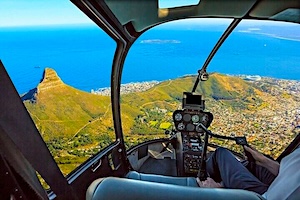 Travel to the Islands by Helicopter! Travel to the Islands by Helicopter!
Avoid the hassle of a ferry trip and save time with a private one-way helicopter trip from the Greek Islands to Athens or from
Athens to the islands. Choose a time that suits your schedule, sit back, and relax, enjoying the spectacular view which is worth the price of the trip. Our private helicopter can seat up to four travelers and is available for one-way helicopter transfers and day trips between all major Greek destinations and islands. We also do private helicopter tours. Click Here for More Information
|
|

|
|
 Use Ferryhopper to find all direct and indirect ferry routes for the islands of Greece, Spain, Italy &
Turkey, compare ferry companies & prices, and book cheap ferry tickets with no hidden fees in one go! Use Ferryhopper to find all direct and indirect ferry routes for the islands of Greece, Spain, Italy &
Turkey, compare ferry companies & prices, and book cheap ferry tickets with no hidden fees in one go!
|
|

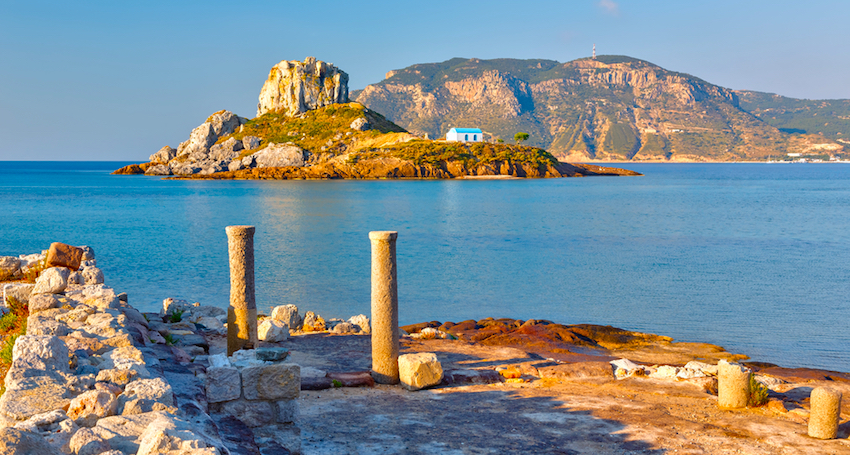








































 Travel to the Islands by Helicopter!
Travel to the Islands by Helicopter!


